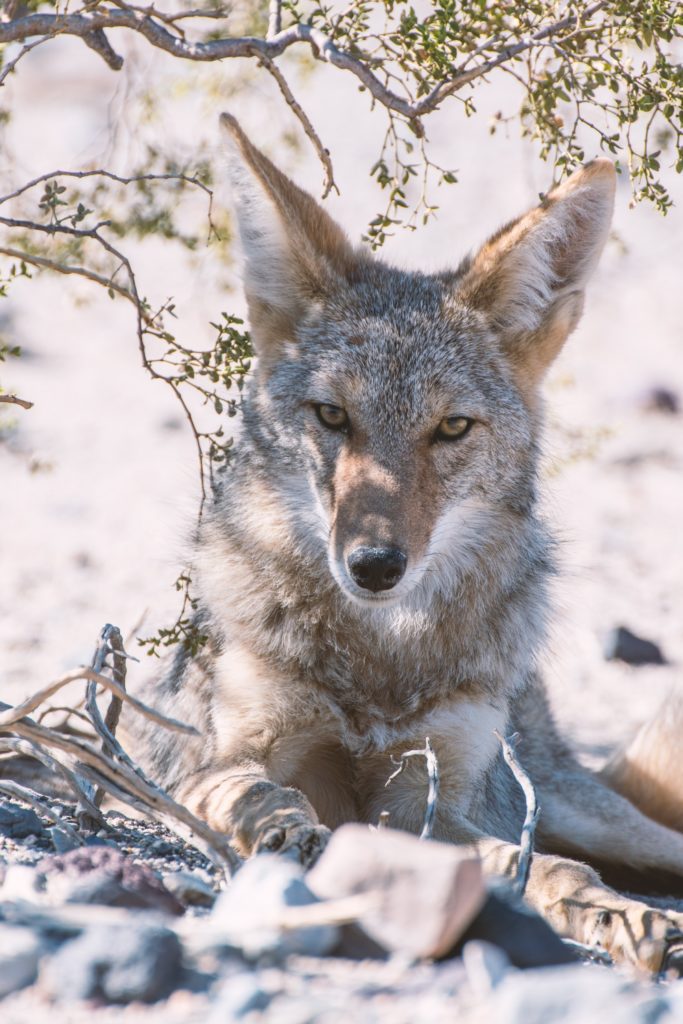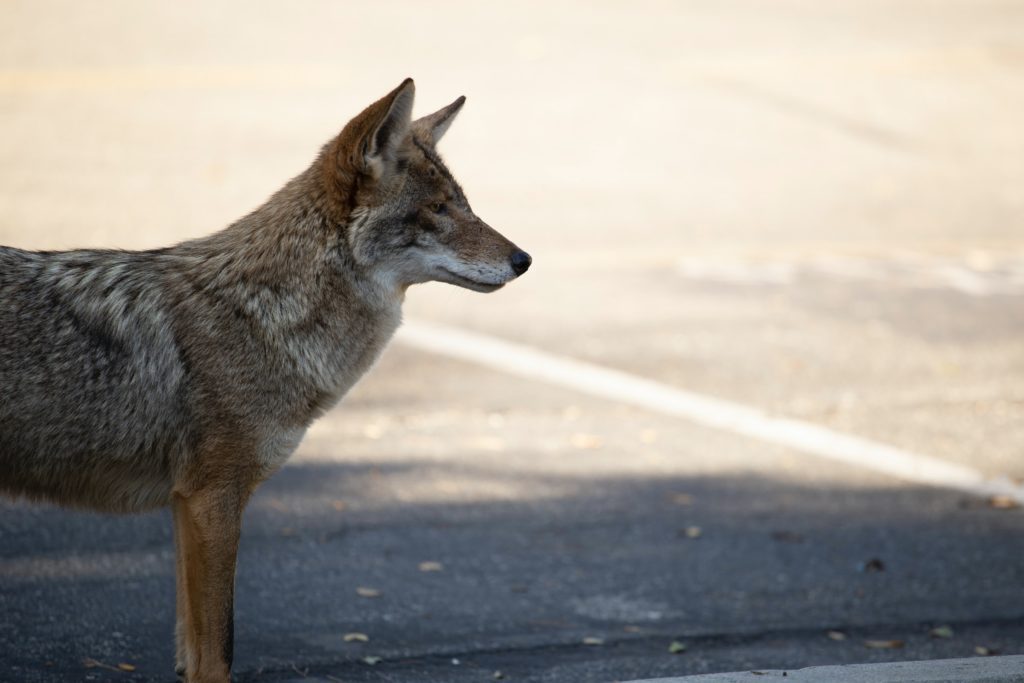Coyotes
An animal that despite our very best efforts, defies capture and extinction with grace. Coyotes are cunning and adaptable and may yet outlast us all.
America's Most Hated Animal
The coyotes is an animal the people love to hate. Many myths and misconceptions exist that put a large target on this cunning creature’s back. Farmers worry for their lambs and cows, and city-dwellers worry for their pets and children. The reality is that very few coyotes pose a problem for people, their loved ones, or their livelihoods and there are ways to help combat coyote-human conflict.
And when we say “America’s most hated” we mean it. Between 1947 and 1956 the Eradication Methods Laboratory through the USDA’s Wildlife Services killed 6.5 million coyotes. This huge killing event was spurred primarily through the misconception of the coyote killing large game animals such as elk, pronghorn, and deer. We now know that coyotes prefer much smaller prey but it doesn’t stop an estimated 500,000 coyotes from being killed each year in America alone.

While coyotes are certainly capable of taking down a young or injured large animal it is very, very rare. Most coyotes will hunt alone and rely on much smaller animals such as rabbits, mice, and squirrels for meat. They will also eat berries in summer and even grasshoppers in the fall when they are plentiful and other food is rare. They also naturally have a fear of humans and will avoid humans and their livestock when possible. Killing a coyote that is not a nuisance simply opens up that territory for another coyote to fill.
Coyote pack howling. Note the jumbled starts and stops and how broken up the howl is.
The Unbeatable Coyote
Despite our best efforts, the coyote thrives. What is it that makes the coyote so successful? It’s not just their flexitarian diet that changes with the seasons. They can also adjust their lifestyles, especially when around humans. Despite common perception, coyotes are naturally diurnal animals that are active during the day. Some groups might live a slightly more crepuscular (active at dawn and dusk) or even nocturnal life if they live near humans. Because of this, we often think of them being nocturnal because that is when we most often see them. They figured out that humans like to be active during the day, so adjusted around us.
They also have almost a super power when it comes to their litter sizes. Studies have shown that when a pack howls they are engaging in a census to figure out how big nearby packs are. If there are many other coyotes around then the lead female of the pack will have a small litter. If there are few others around, leaving plenty of prey to share, then large litters will be born. The average litter size for coyotes is 5-7 pups but large litters of over a dozen are not uncommon. The coyote’s broken howl filled with yips is thought to be a way to disguise a pack’s actual numbers and make them sound larger than they are.
Despite being pack animals, coyotes also rarely hunt as a pack, instead deciding to hunt alone or in pairs to get as many small prey items as possible. This helps them feed all the hungry pups and also fill niches around larger predators that might be going for larger prey items.
Adaptability pays off
While coyotes prefer grasslands for ease of hunting and blending in, they will happily use other types of habitat including desert and lightly wooded areas. As people have altered the landscape in recent history they unwittingly created the perfect habitats for coyotes. European settlers removed large predators such as mountain lions, bears, and especially wolves which used to be direct competitors with the coyote. Without competition, coyote populations boomed and they now inhabit nearly all of North America except for the farthest Northern reaches of Canada.
Urban Coyotes
Coyote-human conflict isn’t limited to the countryside. More and more often large cities throughout North America are finding coyotes running through their streets. Many organizations and scientists are currently researching urban coyotes including the Urban Coyote Research Project which is based in Chicago, Illinois. These street-smart canines take to city life well while learning how to safely cross streets and the best places to grab a bite to eat.
Love coyotes? Haze them!
If you live alongside coyotes (whether in a city or in the countryside) a good hazing when coming across one may be warranted. Hazing coyotes sounds harsh, but a healthy fear of humans will keep coyotes, pets, and people all safe. Hazing comes in many forms from waving your arms and yelling to bluff charging a coyote who is getting too curious. Never feed or leave water out for wild coyotes (or any animal) to dissuade them from coming near homes.
When wild animals become comfortable with people that is when accidents happen. A bold coyote could take a cat or dog or perhaps bite a person when looking for food or after becoming frustrated when food isn’t offered. Coyotes that are simply acting like a wild animals or living on the outskirts of towns should not be hazed. Scaring off “well-mannered” coyotes can invite problematic coyotes to take over that territory.
Always haze safely and if you live in a city with coyotes walk/hike during the day when they are less active and keep your pets on a short leash beside you. It’s important that you report dangerous coyotes to your local animal control or wildlife management program for removal.
A more in-depth look at coyote hazing. See the full Coyote Country playlist on YouTube by JeffCo Parks in Colorado.
Sources/Further Reading:
- Worrall, S. 2016. How the Most Hated Animal in America Outwitted Us All. National Geographic.
- Urban Coyote Research Project website.
- Bonnell, M. 2017. Land Stewardship Series: Coyote Country. Jeffco Open Space. YouTube.
Did you spot an error or have questions about this post? Email Nicole Brown.


